Cairn Terriers are small to medium-sized dogs. Adult Cairn Terriers are typically 11to 12 inches tall at the shoulder and weigh about 11 to 23 pounds.
Cairn Terrier
Breed Type: Terrier
Coat: Wiry, double
Hypoallergenic: No, they will likely trigger allergies.
Temperament: Lively, energetic, intelligent, strong-willed
Life expectancy: 13-15 years
Color & patterns:

Cairn Terriers may be small in size, but they pack a punch with their big personalities. These spunky little dogs are known for their tenacity and determination. Despite their small stature, they are sturdy and hardy, making them great dogs for families with children. Nicknamed the “Toto” dog, Cairn Terriers have become a beloved breed thanks to their roles in popular films and television shows, most notably “The Wizard of Oz.” But beyond their Hollywood fame, Cairn Terriers make excellent pets due to their loyalty and intelligence. They are highly trainable and love to learn new tricks, making them great partners for those who enjoy an active and engaging relationship with their pets. Whether you’re looking for a lap-dog or a playful companion, the Cairn Terrier is sure to win your heart.
Cairn Terrier characteristics
Learn about about Cairn Terrier basics like their fur colors, shedding levels, how much grooming they need, and other Cairn Terrier facts.
Average height
11-12 inches (27.9-30.5cm)
Average weight
11-23 pounds (5.0-10.4 kg)
Average lifespan
13-15 years
Exercise needs
Grooming needs
Full-grown size
Good with cats
Good with kids
Training aptitude
What colors do Cairn Terriers come in?
Cairn Terriers come in many colors, including wheaten, brindle, cream, gray, black, red, red brindle, and silver. The most common colors for Cairn Terriers include wheaten (pale beige to gold), brindle (a mix of dark and light hair in a striped or swirled pattern), red, black, and gray.
Do Cairn Terriers shed?
Yes, Cairn Terriers shed, but it is moderate compared to some other breeds. Cairn Terriers have a double coat consisting of a soft undercoat and a harsh outer coat.
How long does a Cairn Terrier live?
Cairn Terriers typically live between 13 to 15 years. However, individual lifespans can vary based on factors such as genetics, diet, exercise, healthcare, and overall lifestyle. Providing proper care, regular veterinary check-ups, a balanced diet, and maintaining a healthy weight can contribute to helping dogs of all breeds live long and healthy lives.
When is a Cairn Terrier full-grown?
Cairn Terriers reach their full adult size and weight around nine to 12 months old. However, they might continue to fill out and mature until they are about 18 months to two years old.
How do you pronounce Cairn Terrier?
The correct pronunciation of Cairn Terrier is “kairn ter-ee-er.” The word “Cairn” is pronounced as “kairn,” rhyming with “air,” and “Terrier” is pronounced as “ter-ee-er,” with the emphasis on the first syllable.
Cairn Terrier history
Learn about where this Cairn Terrier came from!
Where are Cairn Terriers from?
Cairn Terriers originated from the Scottish Highlands and the Isle of Skye in Scotland. They were originally bred to hunt and chase vermin, especially in cairns (piles of stones used as landmarks or memorials), which is how they got their name.
Cairn Terrier temperament
Learn about about the Cairn Terrier temperament and how well they fit into your lifestyle, home environment, and family.
Are Cairn Terriers good with kids?
Yes, many Cairn Terriers are good with kids when properly trained, socialized, and supervised. However, each Cairn Terrier has their own unique personality, and some might be more tolerant and patient with children than others. They are best suited for families with children who have been taught how to interact with dogs respectfully.
Teach young children to handle the dog gently and to avoid rough play or pulling on the dog’s ears or tail. Always supervise interactions between Cairn Terriers and young children to ensure that both the dog and the child are safe.
Are Cairn Terriers easy to train?
No, Cairn Terriers are not easy to train compared to some breeds. Although they are intelligent and quick learners, they are also independent and strong-willed, so they are somewhat challenging to train.
However, training any dog takes substantial time and effort, regardless of breed, and with patience, consistency, and positive reinforcement, Cairn Terriers can become well-behaved and obedient companions. Begin training your Cairn Terrier as soon as you bring them home, ideally when they are still a puppy. Early training is essential to establish good habits, manners, and a strong bond with your dog.
Do Cairn Terriers bark a lot?
Yes, Cairn Terriers are alert and vocal dogs who tend to bark. Like many terriers, they are quick to alert their people to potential intruders or unusual noises, which makes them effective watchdogs. Excessive barking can become a nuisance behavior if not managed, but proper training can help reduce the barking.
Is a Cairn Terrier a good family dog?
Yes, a Cairn Terrier is a good family dog for the right family. Their lively and spirited nature can bring joy and entertainment to a household. Families should be prepared to provide daily walks, playtime, and interactive activities to meet their exercise needs.
Are Cairn Terriers good with cats?
Yes, Cairn Terriers can be good with cats, but their compatibility largely depends on the individual temperaments of both the dog and the cat. Cairn Terriers have a strong prey drive due to their background as hunters of vermin, so they might instinctively chase small animals, including cats. However, with proper socialization and training from a young age, many Cairn Terriers can learn to live peacefully with cats.
Always supervise interactions between Cairn Terriers and cats, especially when you first introduce them, so you can intervene if necessary and keep both pets safe.
Are Cairn Terriers good with other dogs?
Yes, Cairn Terriers can be good with other dogs, but every dog is unique. Some Cairn Terriers are more friendly and sociable with other dogs, while others are more reserved or selective about their canine friends.
Introducing a Cairn Terrier to other dogs from a young age helps them learn proper social skills and manners. Pairing a Cairn Terrier with dogs of similar size, play style, and energy level can help ensure a harmonious relationship.
Are Cairn Terriers smart?
Yes, Cairn Terriers are smart dogs. They are quick learners and can pick up new commands and tricks with proper training and consistent practice. Their intelligence is often accompanied by an independent streak, which can make them a bit stubborn.
Cairn Terriers need mental stimulation, training, and activities to keep their minds engaged and prevent boredom. Interactive toys, puzzle feeders, obedience training, and regular playtime can help challenge their minds and keep them mentally stimulated.
Are Cairn Terriers good for first-time pet parents?
No, Cairn Terriers are not the best choice for first-time pet parents due to their high energy levels, independent nature, and strong-willed personalities. They require abundant training, mental stimulation, exercise, and attention to help them thrive and prevent behavior problems.
That said, Cairn Terriers are rewarding and loving companions with the right care, training, and commitment. If you are a first-time pet parent considering a Cairn Terrier, do a lot of research, talk to breed experts, and be prepared to provide the time, effort, and resources needed to care for and train your new pet.
Do Cairn Terriers burrow?
Yes, Cairn Terriers burrow and dig. This behavior stems from their history as working dogs bred to hunt and chase small animals, such as rats, mice, and other vermin, out of their burrows or hiding places. Burrowing can provide Cairn Terriers with a sense of comfort, security, and warmth. They might dig or tunnel into soft blankets, pillows, or bedding to create a cozy and enclosed sleeping area. They also enjoy digging, tunneling, and burrowing in soft dirt or sand.
Burrowing can sometimes be problematic, so provide your Cairn Terrier with plenty of exercise, mental stimulation, and enrichment activities to help prevent boredom and reduce excess energy. Regular playtime, interactive toys, training sessions, and outdoor adventures can help manage and control their burrowing behavior.
Can a Cairn Terrier be a service dog?
Yes, a Cairn Terrier can service dogs, but it’s essential to assess their temperament, trainability, physical ability, health, and the specific needs of the handler to determine their suitability for service work. Cairn Terriers are known for their lively, independent, and sometimes stubborn nature, which might not be ideal for all service dog roles. Service dogs are trained to perform specific tasks to assist individuals with disabilities or medical conditions, and not all dogs are suitable for this demanding role. Experienced trainers, behaviorists, and service dog organizations can help evaluate, train, and support Cairn Terriers and their handlers throughout the training process.
Cairn Terrier health
Learn about about the Cairn Terrier health outlook and what diseases they may be prone to at various stages of their life.
Do Cairn Terriers have health problems?
Cairn Terriers are generally healthy, but like all purebred dogs, they are prone to certain health problems. Some common health problems that can affect Cairn Terriers include:
Craniomandibular osteopathy (CMO): Otherwise known as “Lion Jaw,” CMO is caused by excessive bone growth in the jaw, which can cause discomfort when chewing. Though it is quite painful and can cause feeding issues, most puppies grow out of it once they reach adulthood.
Legg-Calvé-Perthes disease: This degenerative hip joint disease causes pain, lameness, and arthritis in the affected hip joint.
Globoid cell leukodystrophy (Krabbe disease): This rare and fatal genetic disorder affects the nervous system and can cause neurological symptoms and decline.
Portosystemic liver shunt (PSS): This hereditary issue obstructs proper blood flow to the liver, sending toxins in unfiltered blood to the heart, brain, and other body parts. PSS can be life-threatening if not treated early. Antibiotics and diet changes can help in the short term, but surgery is the only permanent treatment for the problem.
Eye problems: Issues include progressive retinal atrophy (PRA), a group of genetic eye disorders that can lead to progressive vision loss and blindness over time, and ocular melanosis, a condition that begins with dark patches in the white portion of the eye and causes secondary glaucoma.
Patellar luxation: This is a condition where the kneecap (patella) dislocates or moves out of its normal position, causing lameness and discomfort.
Hypothyroidism: This is a condition where the thyroid gland does not produce enough thyroid hormone, leading to symptoms such as weight gain, lethargy, and skin problems.
Bronchoesophageal fistula: This is a congenital defect that involves an abnormal tube near the esophagus.
Is a Cairn Terrier hypoallergenic?
No, Cairn Terriers are not hypoallergenic dogs, but they might be more suitable for people with allergies compared to high-shedding breeds. Individuals with allergies to dogs should spend time with an adult Cairn Terrier to assess their sensitivity and reaction to the dog’s dander before bringing one home.
Can you shave a Cairn Terrier?
No, you should not shave a Cairn Terrier as it can interfere with their natural coat regulation and protection. Cairn Terriers have a double coat that helps keep them cool in the summer and warm in the winter and protects their skin from sunburn. Shaving can interfere with this natural insulation and alter the texture and color of a Cairn Terrier’s coat. The coat might grow back softer, thinner, or with a different color or pattern than before shaving.
Popular Cairn Terrier mixes
Breeds that are commonly mixed with Cairn Terriers include Bichon Frises, Boston Terriers, and Chihuahuas. Characteristics of a Cairn Terrier mix can vary widely depending on the specific breeds involved, the individual dog’s genetics, and its upbringing. A few common Cairn Terrier mixes include:
Kashon (Cairn Terrier + Bichon Frise)
Cairoston (Cairn Terrier + Boston Terrier)
Cairn-Chi (Cairn Terrier + Chihuahua)
Jacairn Terrier (Cairn Terrier + Jack Terrier )
Pekarin (Cairn Terrier + (Pekingese)

Find Cairn Terrier puppies near you
Adopting a Cairn Terrier
Learn about acquiring a Cairn Terrier - the pros and cons of adopting versus going through a breeder, and associated costs.
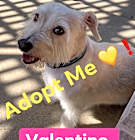
Valentino
Cairn Terrier
Male, 7 yrs 10 mos
Los Angeles, CA
Good with dogs
Not good with cats
House-trained
Spayed or Neutered
Shots are up-to-date
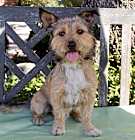
Baxter Boo
Cairn Terrier
Male, young
Valley Glen, CA
Good with dogs
Not good with cats
House-trained
Spayed or Neutered
Shots are up-to-date
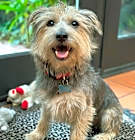
Romy
Cairn Terrier Yorkie, Yorkshire Terrier
Male, young
Los Angeles, CA
Good with dogs
Not good with cats
House-trained
Spayed or Neutered
Shots are up-to-date

Grandma Dolly Mae
Cairn Terrier
Female, 10 yrs 2 mos
Van Nuys, CA
Good with dogs
Not good with cats
Needs experienced adopter
House-trained
Shots are up-to-date
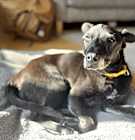
PEE-WEE
Cairn Terrier
Male, 7 yrs 4 mos
Los Angeles, CA
Not good with dogs
Not good with cats
Spayed or Neutered
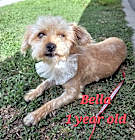
Bella
Cairn Terrier Schnauzer (Standard)
Female, 1 yr 1 mo
Los Angeles /Barstow, CA
Good with dogs
Good with cats
House-trained
Spayed or Neutered
Shots are up-to-date
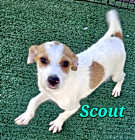
Scout
Cairn Terrier Mutt
Male, 1 yr 2 mos
Los Angeles /Barstow, CA
Good with dogs
Good with cats
House-trained
Shots are up-to-date

Simba
Cairn Terrier Terrier (Unknown Type, Small)
Male, 6 mos
Los Angeles /Barstow, CA
Good with dogs
Good with cats
House-trained
Shots are up-to-date

Valentino
Cairn Terrier
Male, 7 yrs 10 mos
Los Angeles, CA
Good with dogs
Not good with cats
House-trained
Spayed or Neutered
Shots are up-to-date

Baxter Boo
Cairn Terrier
Male, young
Valley Glen, CA
Good with dogs
Not good with cats
House-trained
Spayed or Neutered
Shots are up-to-date

Romy
Cairn Terrier Yorkie, Yorkshire Terrier
Male, young
Los Angeles, CA
Good with dogs
Not good with cats
House-trained
Spayed or Neutered
Shots are up-to-date

Grandma Dolly Mae
Cairn Terrier
Female, 10 yrs 2 mos
Van Nuys, CA
Good with dogs
Not good with cats
Needs experienced adopter
House-trained
Shots are up-to-date

PEE-WEE
Cairn Terrier
Male, 7 yrs 4 mos
Los Angeles, CA
Not good with dogs
Not good with cats
Spayed or Neutered

Bella
Cairn Terrier Schnauzer (Standard)
Female, 1 yr 1 mo
Los Angeles /Barstow, CA
Good with dogs
Good with cats
House-trained
Spayed or Neutered
Shots are up-to-date

